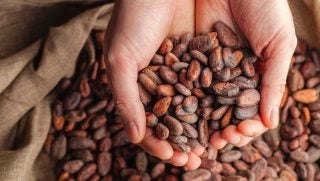Glyphosate-resistant Palmer amaranth, one of the most threatening weeds in Southern corn and soybean fields, is spreading into the Midwest, warns Syngenta.
Palmer amaranth, a member of the amaranthus (pigweed) family, has a complex lifecycle. The combination of its ability to develop resistance and its extended emergence period makes it especially difficult to control. Known to grow up to 3 inches per day and reach up to 8 feet tall, it can easily overtake corn and soybeans due to its aggressive nature. According to research done at Purdue University, Palmer amaranth can create yield losses up to 91 percent in corn and 79 percent in soybeans when left uncontrolled throughout the growing season.
Kevin Bradley, an associate professor at the University of Missouri, has found that equipment, feed, seed and even aquatic birds such as ducks and geese are responsible for Palmer amaranth seed movement. “We moved a lot of seed around, and it’s well beyond a farmer moving it from field to field,” he said. “Palmer amaranth is quickly moving across a larger geography than we’ve seen with any other resistant weed.”
According to Joe Wuerffel, Ph.D., research and development scientist at Syngenta, Palmer amaranth started out as a Southern weed but has now been reported as far north as Minnesota. However, by combining an integrated weed management program that includes both pre- and post-emergence residual herbicides with complementary cultural practices, such as crop rotation, and starting with clean fields and equipment, growers are able to manage the future spread of this difficult-to-control resistant weed.
“Since Palmer amaranth has shown resistance to a number of different herbicides, it’s critical to not allow the weed to emerge from the soil,” Wuerffel explained. “If that’s not an option because it is extremely aggressive, it’s important to apply a post-emergence herbicide when the weed is less than 1 inch tall.”
Syngenta offers an effective weed control program in soybeans that starts with BroadAxe XC or Boundary 6.5 EC herbicides (two effective modes of action each) for pre-emergence weed control of Palmer amaranth with long-lasting residual. A post-emergence application of Flexstar GT 3.5 herbicide (two different modes of action) can help control glyphosate- and ALS-resistant weeds.
In corn, Syngenta offers Acuron (three effective modes of action) and Acuron Flexi (two effective modes of action) herbicides, both of which contain the latest herbicidal active ingredient in corn, bicylopyrone.
“Bicyclopyrone complements the other active ingredients in Acuron to enable broader spectrum and more consistent control of tough weeds other products are missing,” Wuerffel said.
Growers are seeing the benefits of a well-planned weed control program firsthand. “When you throw multiple modes of action at weeds, it’s much more difficult for a plant to survive, especially when they’re effective modes of action,” said Brad Hemeyer, a grower in Gilliam, Missouri. “Syngenta has one of the best herbicide portfolios for effective modes of action in corn and soybeans.”


